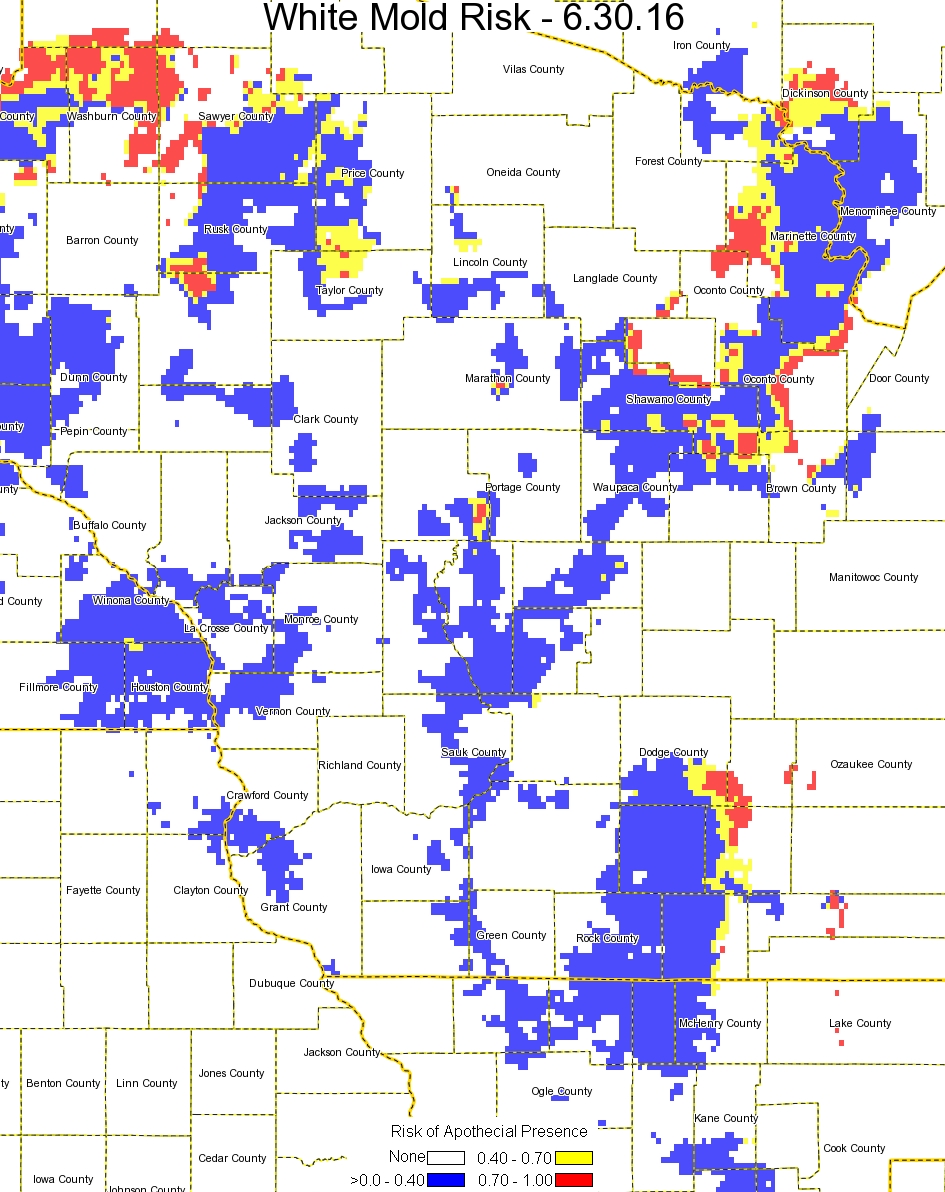Wisconsin White Mold Risk Map – June 30, 2016
Damon L. Smith, Extension Field Crops Pathologist, University of Wisconsin-Madison
Jaime Willbur, Graduate Research Assistant, University of Wisconsin-Madison
Sclero-cast: A Soybean White Mold Prediction Model
**This tool is for guidance only and should be used with other sources of information and professional advice when determining risk of white mold development. We encourage you to read the model how-to guide which can be downloaded by clicking here**
Today is the first public posting of the 2016 experimental white mold risk model map. Postings will be conducted on this blog regularly. We suggest that if you are interested in consulting the risk map for Wisconsin, you subscribe to this blog using the window to the right.
Risk of apothecial presence and subsequent white mold development is generally low for most of Wisconsin today. Warmer than average conditions and limited rainfall over the past month in much of the state has kept the risk low. A few isolated pockets of moderate or higher risk are located around Shawano Co. and north of Barron Co. Soybeans in this area are likely not at the susceptible growth stage.



